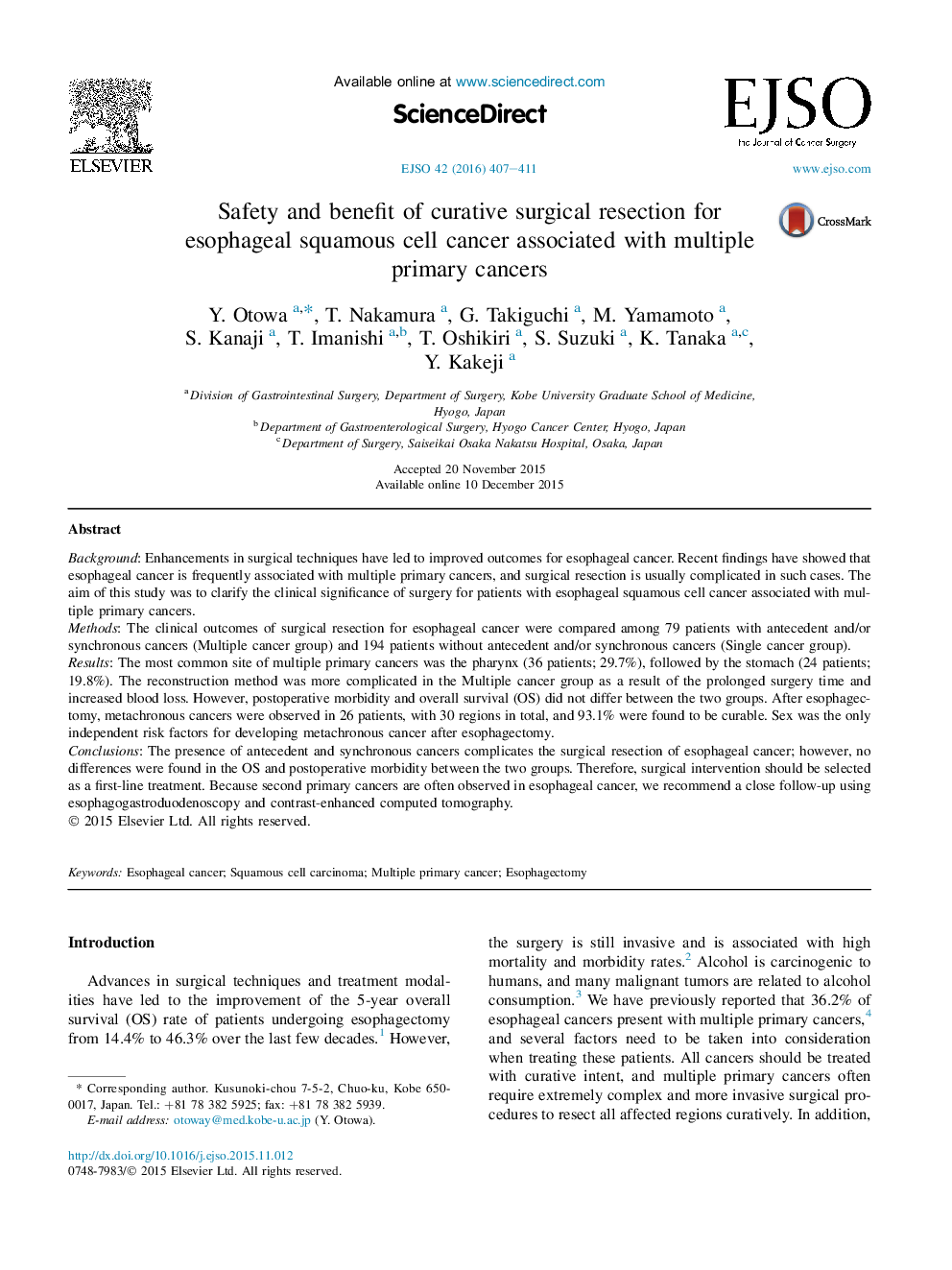| Article ID | Journal | Published Year | Pages | File Type |
|---|---|---|---|---|
| 3984572 | European Journal of Surgical Oncology (EJSO) | 2016 | 5 Pages |
BackgroundEnhancements in surgical techniques have led to improved outcomes for esophageal cancer. Recent findings have showed that esophageal cancer is frequently associated with multiple primary cancers, and surgical resection is usually complicated in such cases. The aim of this study was to clarify the clinical significance of surgery for patients with esophageal squamous cell cancer associated with multiple primary cancers.MethodsThe clinical outcomes of surgical resection for esophageal cancer were compared among 79 patients with antecedent and/or synchronous cancers (Multiple cancer group) and 194 patients without antecedent and/or synchronous cancers (Single cancer group).ResultsThe most common site of multiple primary cancers was the pharynx (36 patients; 29.7%), followed by the stomach (24 patients; 19.8%). The reconstruction method was more complicated in the Multiple cancer group as a result of the prolonged surgery time and increased blood loss. However, postoperative morbidity and overall survival (OS) did not differ between the two groups. After esophagectomy, metachronous cancers were observed in 26 patients, with 30 regions in total, and 93.1% were found to be curable. Sex was the only independent risk factors for developing metachronous cancer after esophagectomy.ConclusionsThe presence of antecedent and synchronous cancers complicates the surgical resection of esophageal cancer; however, no differences were found in the OS and postoperative morbidity between the two groups. Therefore, surgical intervention should be selected as a first-line treatment. Because second primary cancers are often observed in esophageal cancer, we recommend a close follow-up using esophagogastroduodenoscopy and contrast-enhanced computed tomography.
